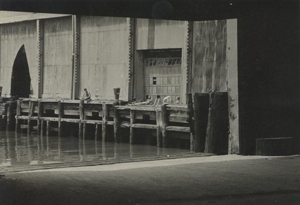2.19.24 — Trust Me
In “Love Songs” (at the International Center of Photography this past fall), photography was not just an expression of love or a record of love. It was an act of love itself. For Iiu Susiraja (at MoMA PS1), that love seems directed mostly at her.
Not for the photographers in “Trust Me,” who reach out to family, friends, romantic partners, and (lest that leave out anyone) “other networks.” It is about “forging connections,”  but connections may prove fragile or elusive. It requires trust in others, at the Whitney through February 25, but can you look at a photograph and trust in what you see?
but connections may prove fragile or elusive. It requires trust in others, at the Whitney through February 25, but can you look at a photograph and trust in what you see?
To Moyra Davey, reaching out is an ongoing project, and it keeps circling back to her. For the show’s title work, as curated by Kelly Long, she mailed identical envelopes to everyone she could trust, who handed them right back. Perhaps the differences never mattered much in the first place. Davey has taped a photo to each one, the tape as prominent as any connection. The subjects, from meds (lots of them) to trees, can seem revealing or remote. As she writes in black pen, “most people will divulge more than you would wish,” and that may or may not include her.
As Bob Dylan sang, “I’ll see you in the sky above, in the tall grass and the ones I love.” Barbara Hammer presents Barbara & Terry, in the grass and in one another’s arms. A couple of mixed race, for D’Angelo Lovell Williams, reaches out across still taller and paler vegetation. It might almost be shredded paper from Davey’s envelopes. Mary Manning photographs friends just milling around, but also flowers, almost like a silkscreen for Andy Warhol. Jenny Calivas herself sinks into water or mud, perhaps never to return.
Shadow and light, too, provide a cover. Subjects for Muriel Hasbun hide not just in the reeds, but in a ghostly overexposure. Genesis Báez turns herself and her mother into multiple silhouettes and their shadows. Elsewhere she stays out the picture, connected to her mother by a thread. It might be all that remains of their love. Lola Flash settles for a single face lost in a glare, perhaps her own.
Maybe they are all simply overexposed, under photography’s harsh gaze. Still, they share strong feelings and a sense, however elusive, of place. It could be the return address on Davey’s envelope. It could be the sea off the coast of Florida, where Williams goes for a swim. Is that a wheelchair on the moon for Flash? No, it is a beach in Provincetown, on a sandy hill beneath a blistering sky.
Place may refer to ancestors, much as for Hasbun—who adds the words “all the saints,” both in Arabic and in the Spanish of her native El Salvador. Williams reenacts the final stage in a tortured African American journey from Nigeria to George. Place may also refer to gender and the body. After all, who can imagine connections apart from desire? Alvin Baltrop is once again cruising the Hudson River piers, like gay men in a time of Peter Hujar and David Wojnarowicz. Dakota Mace makes her prints from chemicals on paper exposed to light, because her own body cannot tolerate photographic silver, and calls them Bonds.
Susan Sontag saw photography as, inevitably, exploiting what it claims to lament or to love. Not in this show, so modest that its eleven photographers (from the Whitney’s collection) could almost be one. Not when the self depends on others for its very identity and existence—and not when trust is so hard to sustain. Laura Aguilar poses with a cardboard sign, “Will Work for Axcess.” For Franz Kafka, “A book is an axe for the frozen sea within us.” Here art knows best the frozen sea.
Read more, now in a feature-length article on this site.